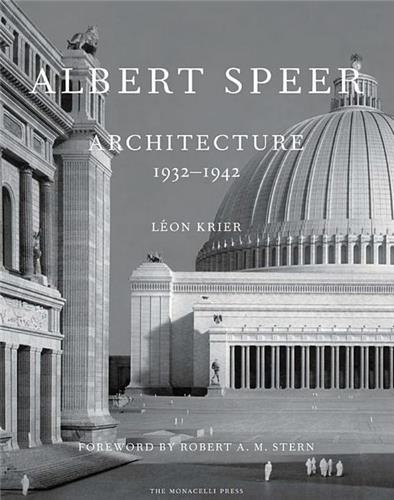en savoir plus

Permet à tous ses détenteurs d'obtenir 5% de réduction sur tous les livres lors du retrait en magasin (réduction non cumulable avec les réductions de type étudiant).
Offre également un certain nombre d'avantages auprès de nos partenaires.
Avec les favoris, retrouvez dans un espace les sélections effectuées au fur et à mesure de vos navigations dans le site.
Constituez pour votre usage personnel vos listes de livres en prévisions d'achats futurs et votre sélection d'articles, dossiers, événements, vidéos ou podcasts préférés ou à découvrir plus tard...
Il suffit simplement de cliquer sur "Ajout Favori" sur chaque page qui vous intéresse pour les retrouver ensuite dans votre espace personnel.
Requiert un compte Mollat
Requiert un compte Mollat
Albert Speer : architecture 1932-1942
Auteur : Léon Krier
en savoir plus
Résumé
Fac-similé de l'édition originale de cette étude consacrée à l'architecte d'Hitler complété d'une nouvelle préface de l'auteur et d'un avant-propos de R.A.M. Stern. Fondée sur des entretiens avec Speer et centrée sur son plan d'urbanisme pour Berlin ainsi que sur ses réalisations majeures, elle éclaire les liens entre son oeuvre et son projet politique tout en contribuant à l'étude du classicisme. ©Electre 2025
Quatrième de couverture
First published in 1985, Albert Speer Architecture 1932-1942 is a lucid, wide-ranging study of an important classical architect of the twentieth century. Yet it is simultaneously much more : a philosophical reflection on Modernity and politics on art, good and evil.
This volume presents a facsimile of the original 1985 book, complemented by a new preface by author Léon Krier and an foreword by Robert A. M. Stern.
Krier raises the fundamental question « Can a war criminal be a great artist ? » Here Krier demonstrates that Albert Speer, Adolph Hitler's architect of choice, was responsible for one of the boldest architectural and urban programs of the twentieth century. Basing his study on a series of interviews with Speer, Krier focuses on the architect's plan for Berlin, an unprecedented modernization of the city intended to be the capital of Europe. In addition to the urban plan, Speer designed buildings for major institutions, including the monumental Great Hall, Hitler's Palace, the High Command of the Armed Forces, the New Chancellery, and the Triumphal Arch. Illustrations are drawn primarily from Speer's personal archive.
Krier candidly confronts the great difficulty of disentangling the architecture and urbanism of Albert Speer from its political intentions. This difficulty notwithstanding, Krier's presentation is an important contribution to the study of classicism in architecture and architecture in the affairs of state.
Fiche Technique
Paru le : 07/05/2013
Thématique : Paysagisme
Auteur(s) : Auteur : Léon Krier
Éditeur(s) :
Monacelli Press
Collection(s) : Non précisé.
Contributeur(s) : Préfacier : Lars-Olof Larsson - Préfacier : Robert A.M. Stern
Série(s) : Non précisé.
ISBN : 978-1-58093-354-4
EAN13 : 9781580933544
Reliure : Relié sous jaquette
Pages : XXVII-245
Hauteur: 33.0 cm / Largeur 26.0 cm
Épaisseur: 3.0 cm
Poids: 2200 g

